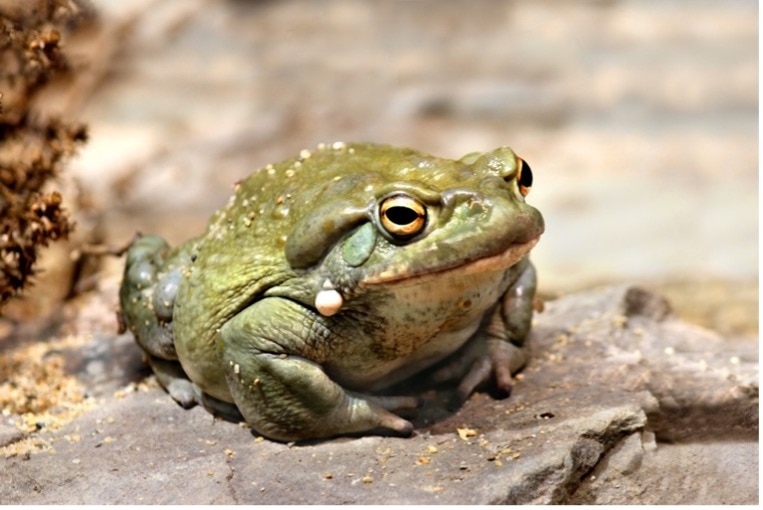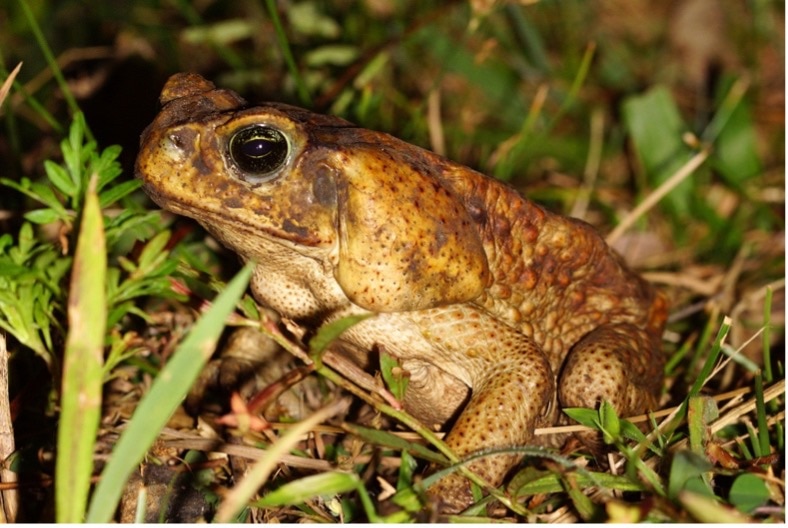Toad Poisoning in Cats
What Is Toad Poisoning in Cats?
All species of toads are poisonous. However, most toads do not cause severe poisoning with two important and deadly exceptions—the Colorado River toad (Incilius alvarius, formerly known as Bufo alvarius) and the marine toad (Rhinella marina, formerly Bufo marinus, also known as the cane toad). These large toads are also often referred to as “Bufo toads.” Toads contain glands that secrete a thick, creamy white substance that is toxic to dogs and cats.
In the United States, the primary locations where toad poisonings occur are Colorado, Arizona, Texas, Hawaii, and Florida. Most exposures happen in the summer months and in the evening, especially after it rains—this is when toads are most active.
In cats, toad poisoning can occur from licking, mouthing, or eating the Bufo toads. Even drinking water from a dish where a toad was sitting, or from a pond containing toad eggs, can result in poisoning. The toxin is extremely irritating and is typically absorbed through the cat’s gums, causing drooling within seconds. The toad secretions contain toxins that can cause hallucinations, seizures, abnormal heart rhythms, trouble breathing, or even death.
Exposure to bufo toads can be deadly and is considered an absolute medical emergency. If you think your pet may have had contact with one, seek veterinary care immediately.


Recommended Products
How Are Toads Poisonous to Cats?
Bufo toads are poisonous to cats due to the toxic secretions produced by their glands. The toxicity can vary based on the size and dose. For example, larger toads have larger glands and produce more secretions. Potency of the toxin can also vary with species and geographic location. Toads excrete more of these toxic substances when they feel threatened—like when they are approached by a cat.
Toads are poisonous at all stages of life, including as tadpoles and eggs. When a cat licks, mouths, or eats a toad, the toxic substances are absorbed through the cat’s mouth, open wounds, or other mucus membranes.
Symptoms of Toad Poisoning in Cats
Clinical signs associated with toad poisoning are rapid, often starting within a few seconds or minutes. Most symptoms are seen within one hour of contact with a Bufo toad. Clinical signs may include:
-
Drooling/foaming at the mouth
-
Pawing at the face and mouth
-
Shaking the head
-
Vocalizing/crying
-
Red gums
-
Retching/vomiting
-
Diarrhea
-
Fever
-
Stumbling/lack of coordination
-
Tremors/seizures
-
Trouble breathing
-
Increased or decreased heart rate
-
Abnormal heart rhythms (arrhythmias)
The heart and neurologic clinical signs can be life-threatening.
Your Cat Ate a Toad. Now What?
If you suspect that your cat may have licked, chewed on, or eaten a toad, take them immediately to a veterinarian. Often, you may see your cat playing with or attacking a toad, but other times you may find the cat drooling and disoriented. Because toad toxic secretions are rapidly absorbed and can quickly lead to death, do not delay in seeking care.
Toads are generally not harmful to humans, but humans can have allergic reactions to the toxic substances they secrete. Also, unhealthy toads can transmit the Salmonella bacteria to humans when touched. For these reasons, it is better to take a photo of the toad rather than try to catch it for identification purposes.
Immediate flushing of the cat’s mouth with large amounts of water can decrease the amount of poison absorbed and reduce the severity of the clinical signs. However, cats do not appreciate having their mouth flushed out, and delaying their care may be deadly. If your cat allows you to do so without biting or scratching you, try to wipe their gums and mouth with a clean, moist cloth and then head immediately to the vet. Any additional flushing is best performed by veterinary staff.
How Veterinarians Diagnose Toad Poisoning in Cats
To diagnose toad poisoning in your cat, your veterinarian will collect a thorough history, including any eyewitness descriptions or photos of the toad, if available, to help identify whether it is a Bufo toad. If cats are witnessed with the toad, diagnosis is more straightforward. If unwitnessed, however, vets must use clinical signs and a level of suspicion, as there are no readily available diagnostic tests to confirm toad poisoning.
Your veterinarian will start with a thorough physical examination to assess the heart, lungs, and neurologic status. An electrocardiogram, or EKG, may be performed to assess the rhythm of the heart and check for abnormal beats. A chest x-ray may be recommended to check for any fluid in the lungs. Also, a complete blood count, serum blood chemistry, and urinalysis will likely be recommended as a baseline evaluation.
Treatment of Toad Poisoning in Cats
Cats with toad poisoning must be treated as early as possible. Due to the rapid absorption and possible neurologic symptoms, most vets will not recommend inducing vomiting.
Once at the hospital, your veterinarian will perform a thorough physical examination, including a complete neurological examination, as well as check for fever and listen to the heart and lungs. Additional flushing of the mouth will likely be performed.
Your pet will likely be given IV fluids to help maintain blood pressure and support hydration. Other therapies may be administered to reduce the amount of saliva, correct abnormal heart rhythms, stop seizures, or treat nausea. Oxygen therapy may also be needed.
Recovery and Management of Toad Poisoning in Cats
Early and aggressive treatment is crucial for a good outcome for toad poisonings in cats. Prognosis will vary depending on the species of toad encountered, amount of secretions ingested, time from poisoning to start of treatment, and your pet’s response to therapy. Fortunately, in cats that do respond well, clinical signs typically resolve within 30 minutes of treatment.
Most cats experiencing toad poisoning will remain hospitalized for 24-48 hours for continued supportive care and medications. Monitoring will likely include repeating an EKG to monitor the heart and rechecking bloodwork, particularly electrolytes and kidney values. If the cat survives the poisoning, there are usually no long-term effects.
Prevention of Toad Poisoning in Cats
Avoiding dangerous toads is the best way to prevent toad poisoning in cats. If you live in an area known to have Bufo toads, consider keeping your cat indoors. Or if your feline friend loves the outdoors, consider supervised time on a harness with a leash, or in a catio to allow them to have safe outdoor time. Bufo toads are generally nocturnal, so take extra care at night, especially after it rains, when toads are most active.
References
-
Peterson M, Talcott P. Small Animal Toxicology. 3rd ed. Elsevier Saunders; 2001.
-
Hovda L, et al. Blackwell’s Five-Minute Veterinary Consult Clinical Companion: Small Animal Toxicology. 2nd ed. John Wiley & Sons; 2016.
-
Gwaltney-Brant S. Merck Veterinary Manual. Toad Poisoning in Dogs and Cats. November 2022.
Featured Image: iStock.com/Nils Jacobi




